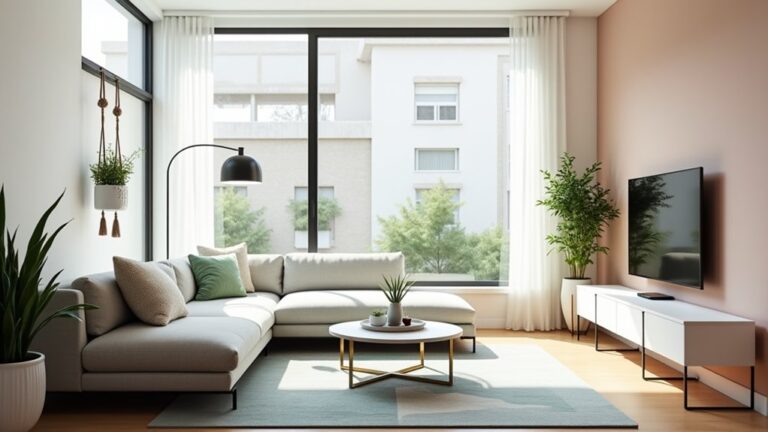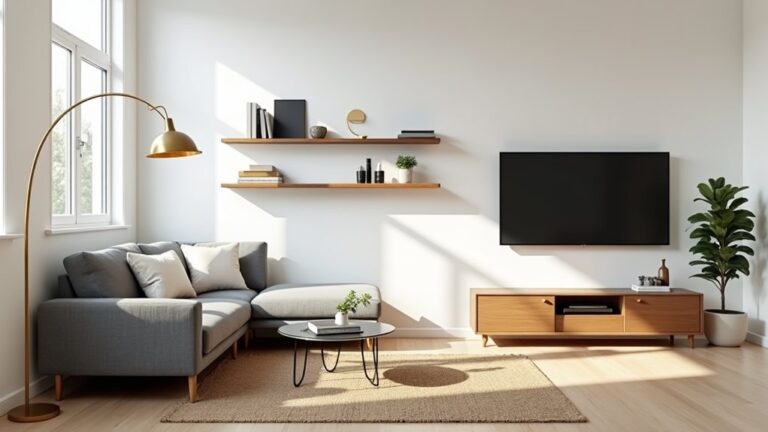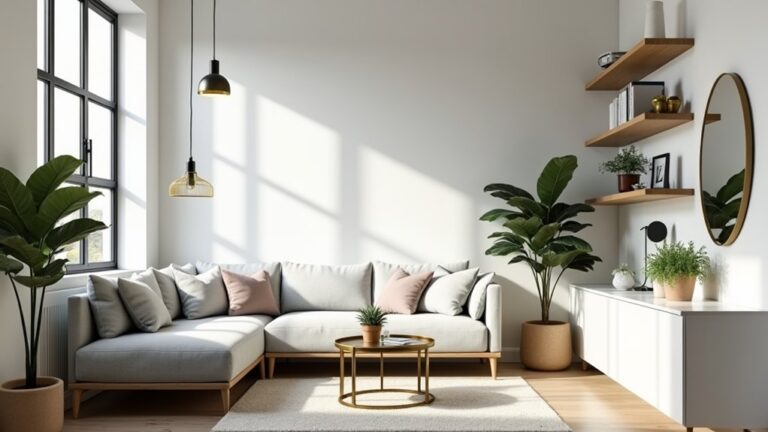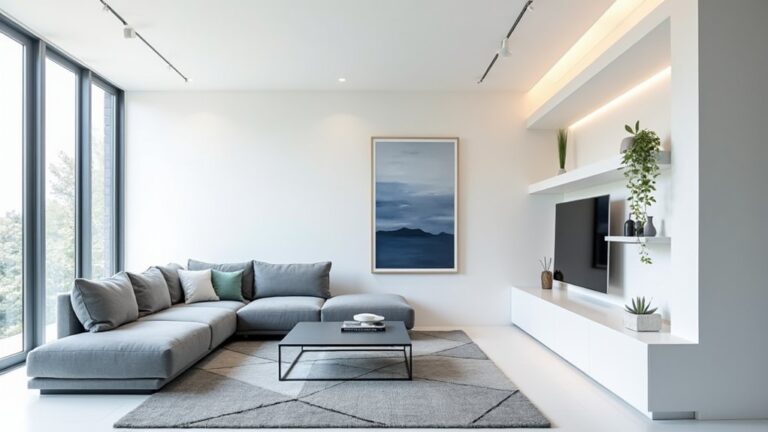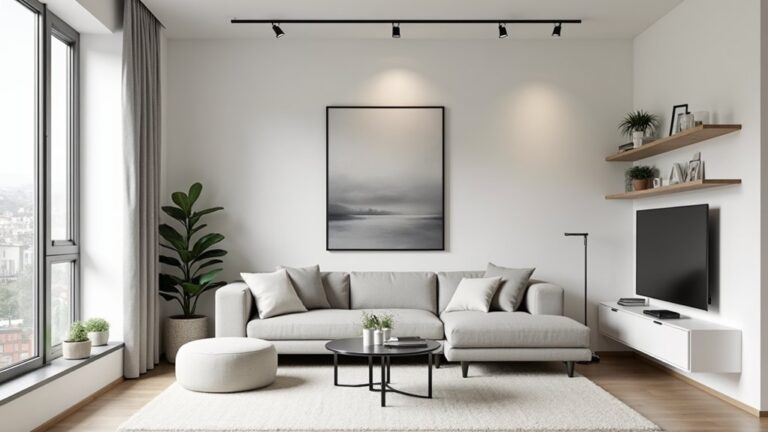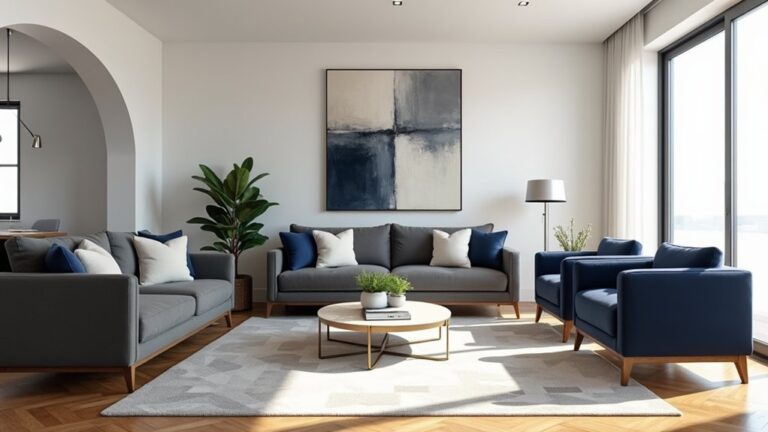Transform your space by embracing unexpected color choices that defy traditional design conventions. Consider bold jewel tones like sapphire and emerald as enchanting focal points, or explore textured neutrals with metallic undertones for sophisticated depth. Nature-inspired innovations, including iridescent greens and bioluminescent hues, forge authentic connections to organic elements. The strategic mixing of metallic finishes with unconventional paint colors introduces dimensional complexity, while edgy neutral palettes create layered statements with architectural integrity. These innovative approaches to color selection reveal transformative potential in interior spaces, revealing possibilities beyond conventional design wisdom.
Key Takeaways
- Deep jewel tones like sapphire and emerald create dramatic focal points while maintaining sophistication in traditionally neutral spaces.
- Metallic undertones in neutral colors add unexpected depth and transform basic beiges and grays into complex design statements.
- Nature-inspired iridescent and phosphorescent hues bring unconventional energy to rooms while maintaining organic authenticity.
- Mixed metallic finishes against unexpected wall colors create dynamic visual interest and modern architectural dimension.
- Cultural color combinations challenge traditional Western palettes and introduce fresh psychological responses to living spaces.
Psychology Behind Unexpected Color Choices
Through extensive psychological research, unexpected color choices have been shown to greatly impact human perception and emotional response.
Color perception varies greatly across cultural significance zones, influencing psychological effects and personal preference patterns.
When designing spaces, visual harmony emerges from understanding how trend influence shapes ambient atmosphere, often challenging conventional wisdom about which hues create the most compelling environmental impact.
The thoughtful blend of earthy tones and pastels creates a serene environment that promotes tranquility while allowing for bold accents to add personality.
Bold Jewel Tones for Impact
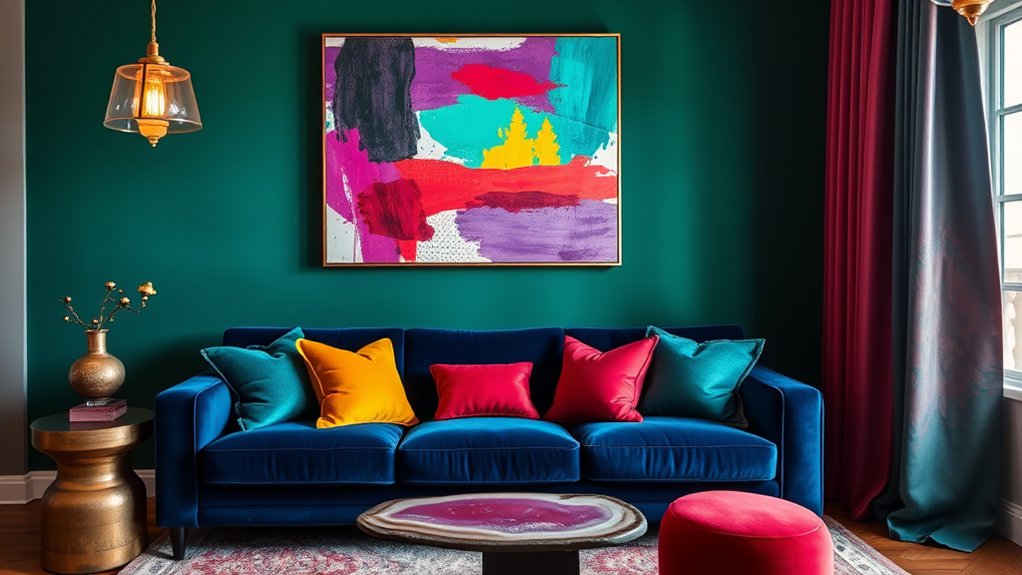
While traditional color schemes often rely on muted tones, bold jewel tones deliver commanding visual impact that transforms ordinary spaces into extraordinary environments.
Strategic placement of sapphire blues, emerald greens, and deep amethysts creates sophisticated depth through carefully curated jewel tone combinations.
These impactful accents, when judiciously applied, establish focal points that command attention without overwhelming the space's visual hierarchy.
Neutral Colors With Edge
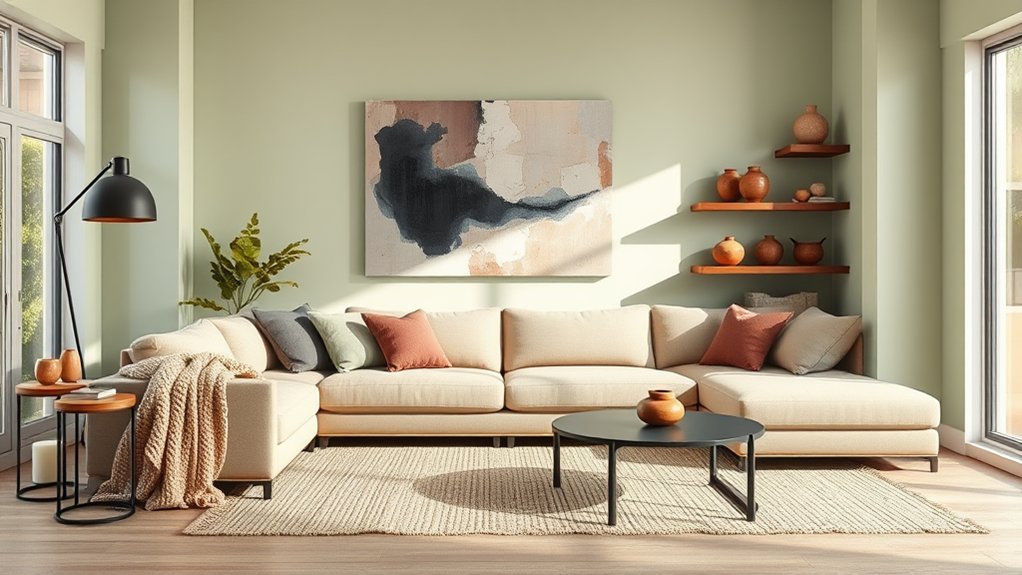
Moving beyond vibrant jewel tones, contemporary neutral palettes have evolved far beyond basic beige and gray.
Today's sophisticated neutral palette accents incorporate unexpected elements like metallic undertones, charred wood finishes, and oxidized metal surfaces.
These edgy design elements transform traditional neutrals into complex, layered statements that command attention while maintaining sophisticated restraint and architectural integrity.
Taking cues from Scandinavian minimalism, these neutral tones create serene spaces that feel both modern and timeless.
Nature-Inspired Unconventional Palettes
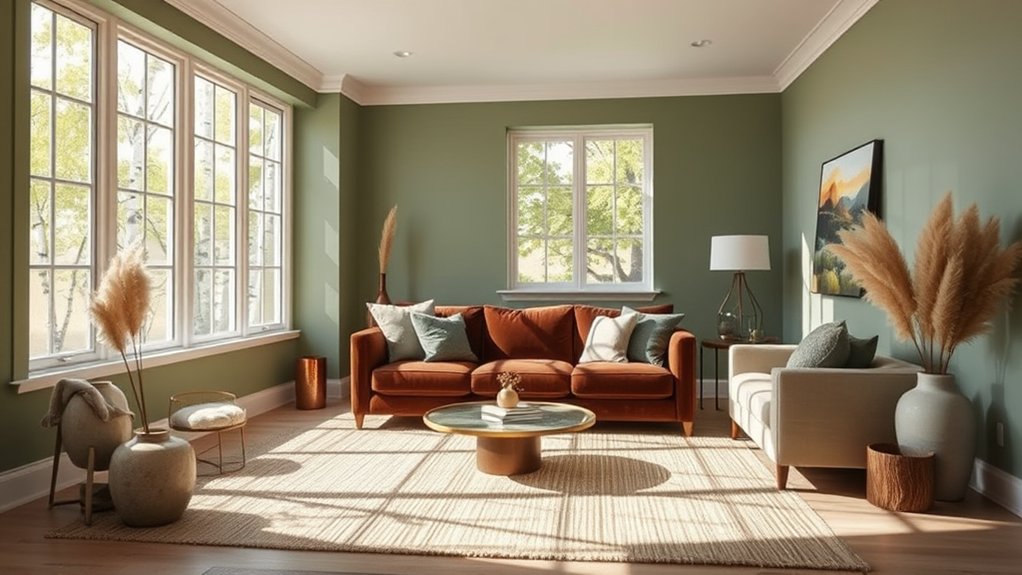
Recent innovations in color theory have uncovered surprising palettes drawn from nature's lesser-explored phenomena, such as bioluminescent organisms, rare mineral formations, and deep-sea creatures.
These unconventional combinations merge iridescent forest greens with phosphorescent undertones and ethereal ocean blues with crystalline qualities, transcending traditional color boundaries while maintaining organic authenticity.
The result: sophisticated spaces that capture nature's most enigmatic chromatic expressions.
Mixing Metals and Paint Colors
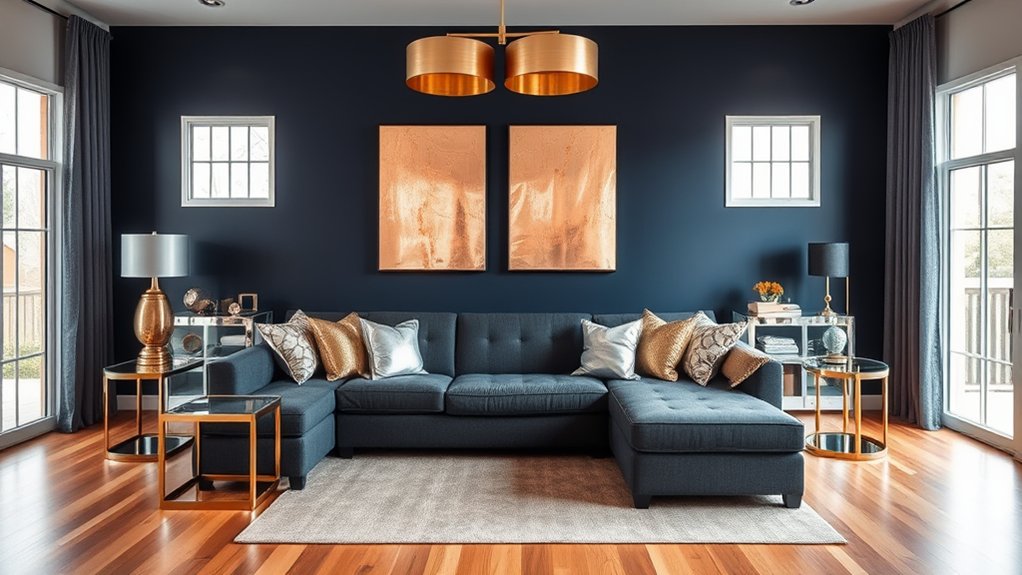
The juxtaposition of metallic finishes with carefully selected paint colors creates sophisticated interior environments that transcend conventional design boundaries.
Copper elements paired with cool gray walls establish a striking balance between warmth and modernity, while allowing the metallic sheen to serve as an architectural focal point.
The combination of brushed nickel fixtures with earthy paint tones creates an organic harmony that references both industrial refinement and natural elements, resulting in spaces that feel both grounded and contemporary.
Copper With Cool Grays
Copper tones shine brilliantly against cool gray backdrops, creating an unexpected yet sophisticated marriage of warm and cool elements in contemporary design.
The reflective quality of copper accents introduces dimensional warmth to spaces dominated by gray undertones, while maintaining visual coherence.
This refined pairing elevates interior aesthetics, offering a balanced interplay between metallic richness and understated neutrality.
Nickel Meets Earthy Hues
Brushed nickel finishes harmonize beautifully with earth-toned paint colors, creating an organic fusion that bridges industrial modernity with natural warmth.
The sleek, silvery sheen of nickel finishes pairs exceptionally well with rich terracotta, deep sage, and warm sienna hues.
This sophisticated combination allows earthy accents to ground the metallic elements while maintaining a refined, contemporary aesthetic throughout the space.
Dark Ceilings That Transform
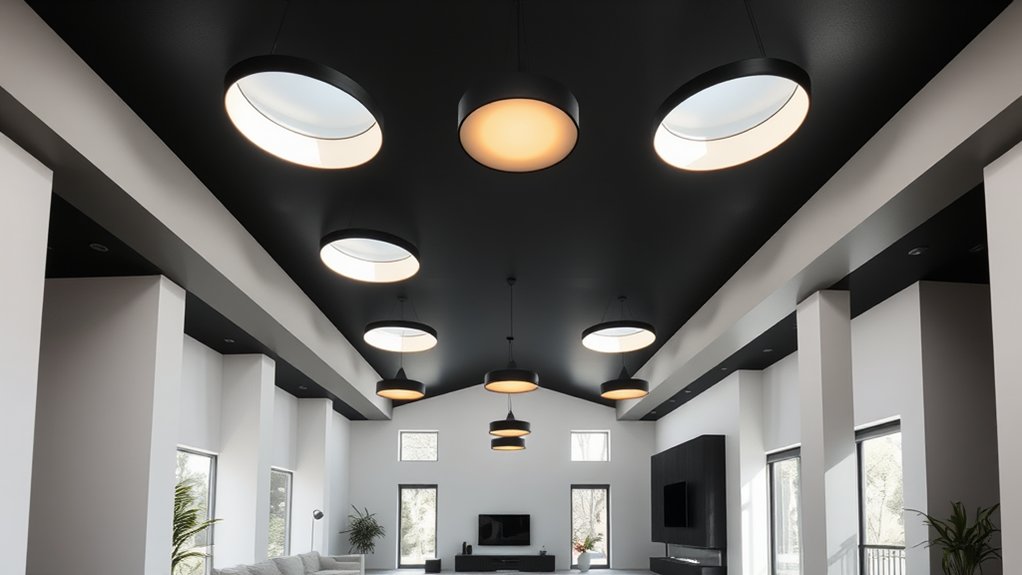
While conventional design wisdom often dictates light-colored ceilings, strategic use of dark hues overhead can create dramatic vertical dimensionality and draw the eye upward in spectacular fashion.
In industrial-style spaces, deep ceiling tones effectively camouflage exposed ductwork and mechanical systems while adding architectural sophistication to the overall aesthetic.
The optical illusion created by darker ceiling planes can paradoxically expand the perceived volume of compact rooms, as the boundaries between walls and ceiling become less defined, allowing the space to feel boundless above.
Creating Visual Height Drama
Dark ceilings stand out as one of interior design's most transformative techniques, turning ordinary rooms into dynamic spaces that play with perception and depth.
The strategic use of vertical stripes draws the eye upward, creating an illusion of soaring heights, while carefully executed ceiling murals establish dramatic focal points.
These design elements work synergistically to amplify spatial dimensions and architectural presence.
Incorporating neutral color palettes on walls and floors helps balance the bold ceiling treatment while maintaining visual harmony throughout the space.
Hiding Exposed Pipe Systems
Industrial aesthetics often present unique challenges, particularly when managing exposed pipe systems in modern spaces.
Rather than viewing these architectural elements as eyesores, consider transforming them through strategic color integration.
Deep charcoals and midnight blues serve as creative disguises, while playful murals incorporating the pipes' linear forms can elevate them from functional necessities to intentional design features.
Expanding Small Rooms Upward
Conventional wisdom often dictates light-colored ceilings to create an illusion of height, yet strategic use of deep, rich hues overhead can paradoxically expand spatial perception in compact rooms.
Color Blocking Beyond Primary Hues
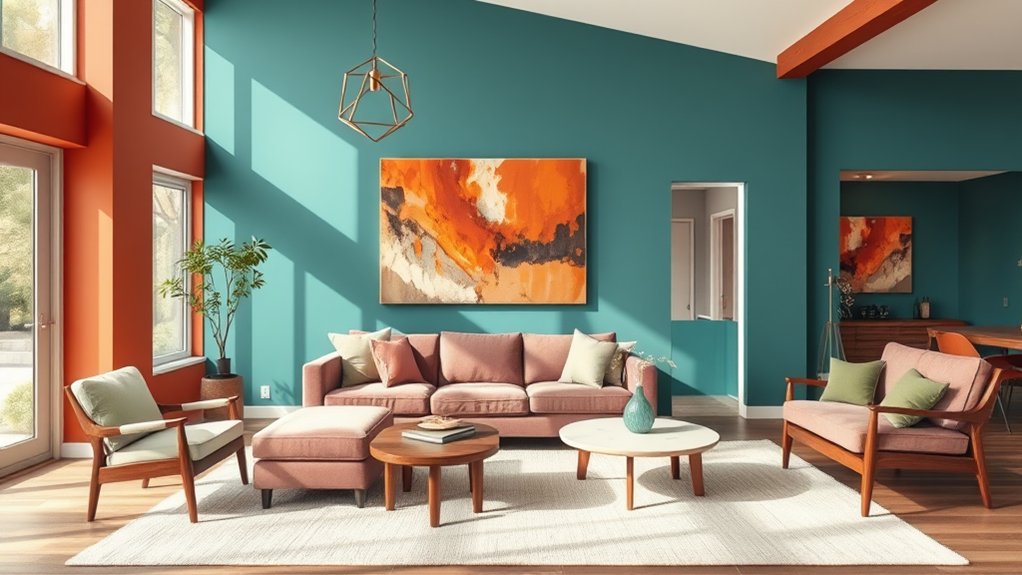
Modern color blocking has evolved far beyond the traditional constraints of primary red, blue, and yellow combinations.
Contemporary color trends embrace sophisticated pairings like sage with terracotta, mauve with charcoal, and ochre with navy.
These unexpected chromatic arrangements create dynamic accent walls and architectural interest, transforming spaces through strategic placement of complementary or analogous color schemes that challenge conventional design parameters.
Monochromatic With a Twist
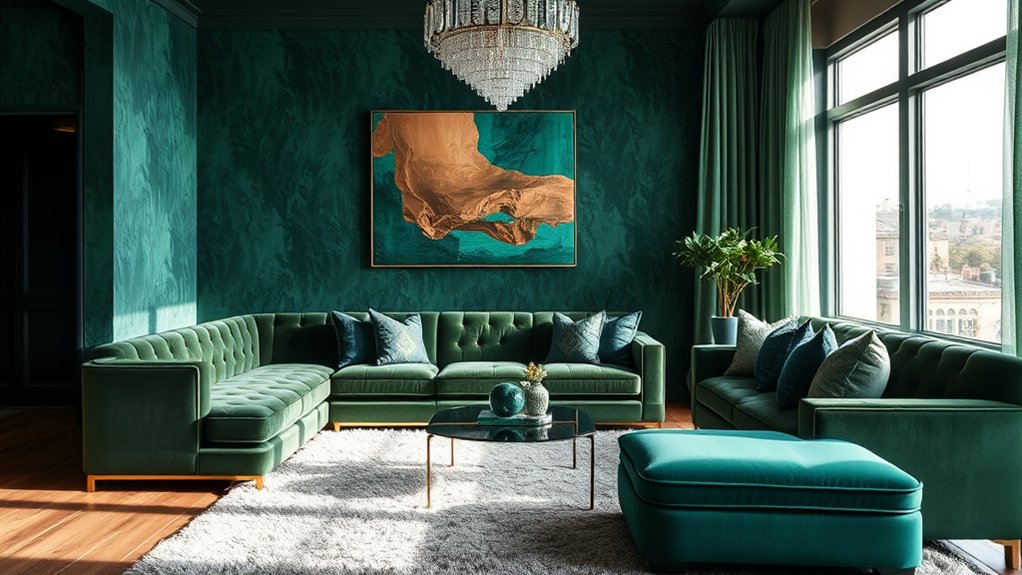
Traditional monochromatic schemes' predictability gives way to nuanced interpretations that elevate single-color palettes beyond their basic foundations.
Contemporary approaches incorporate unexpected tonal variations within textured layers, creating depth through subtle shifts in saturation and finish.
Global Color Influences
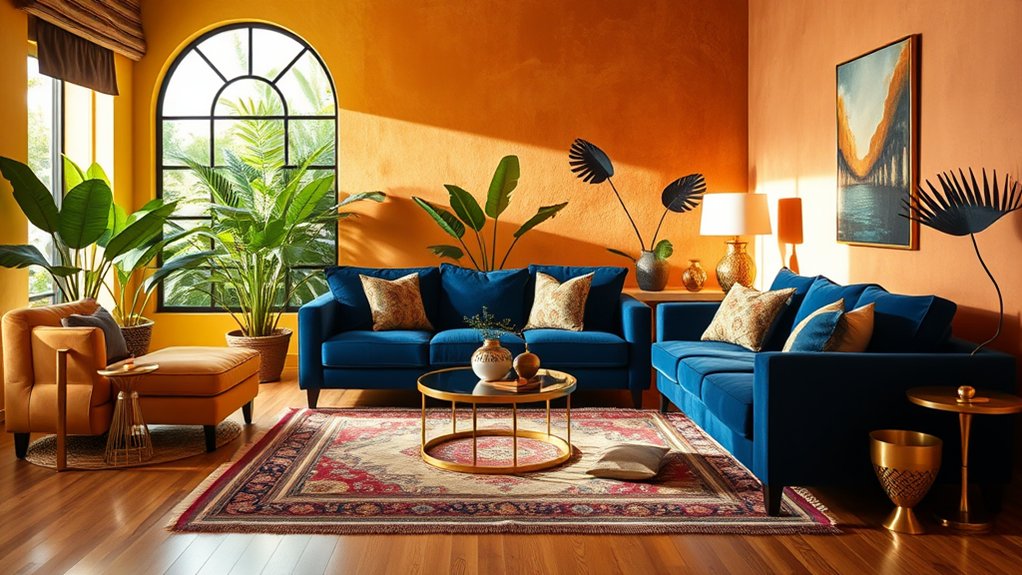
Cultural influences from diverse regions around the globe have revolutionized interior color palettes, introducing rich chromatic expressions previously unexplored in Western design.
Global design trends now embrace Japanese indigo, Moroccan saffron, and Indian vermillion, while cultural color symbolism infuses spaces with deeper meaning.
These international hues transcend mere aesthetics, offering authentic cultural resonance in contemporary interiors.
Frequently Asked Questions
How Do Lighting Conditions Affect Unconventional Color Choices Throughout the Day?
Natural daylight impact dramatically alters unconventional color perceptions, while artificial illumination creates varying shadow effects, transforming bold hues from vibrant morning statements to subtle evening undertones throughout diurnal cycles.
What Paint Finishes Work Best When Using Unusual Color Combinations?
When combining unconventional hues, satin finish provides balanced reflectivity for primary walls, while matte appeal works exceptionally well for accent areas, creating sophisticated depth and visual harmony throughout spaces.
Can Bold Color Choices Affect Home Resale Value?
Want your home to stand out, but worried about future buyers? While bold choices can limit market appeal, strategic use of distinctive colors in modifiable areas maintains resale value while expressing personal style.
How Often Should Unconventional Color Schemes Be Updated or Refreshed?
Professional interior designers recommend evaluating unconventional color scheme longevity every 2-3 years, with minor seasonal refreshes biannually to maintain visual interest and adapt to evolving design preferences.
What's the Ideal Room Size for Experimenting With Unexpected Color Combinations?
Like a blank canvas waiting for inspiration, both small spaces and open layouts present viable opportunities for chromatic experimentation, though rooms between 200-300 square feet offer ideal balance for daring color combinations.
Conclusion
Innovative color selection transcends traditional design paradigms, with studies indicating that unexpected chromatic choices can increase cognitive engagement by up to 27% in interior spaces. The amalgamation of unconventional palettes – from prismatic jewel tones to nuanced neutrals and globally-inspired hues – creates transformative spatial dynamics. When executed with precision, these sophisticated color strategies elevate architectural elements while fostering enhanced psychological responses to inhabited environments.


